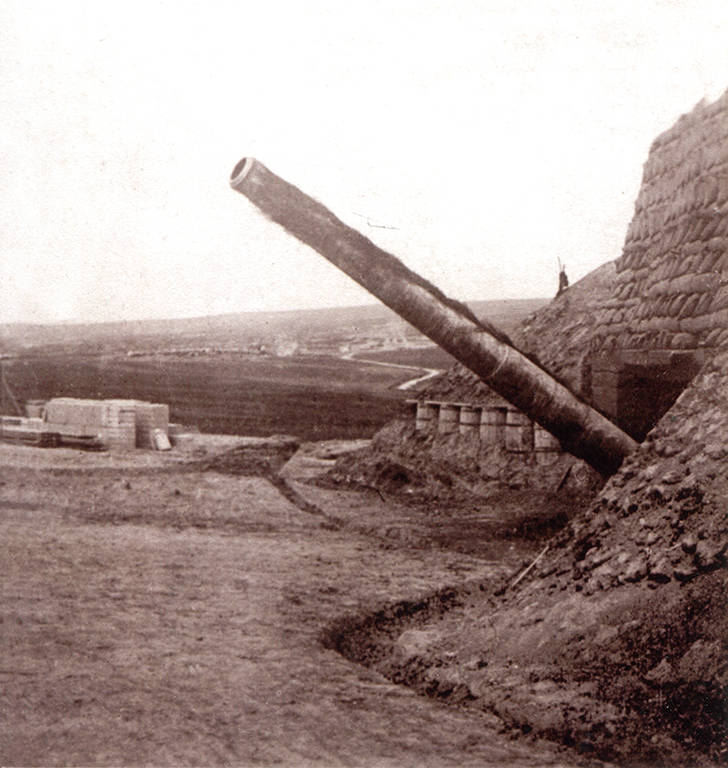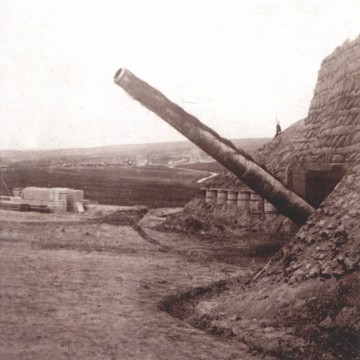Ottoman period
Thessaloniki fell to the Ottomans in March 1430. According to oral tradition, which survives today, the Ottomans entered the city through the Kalamaria Gate on the east side of the wall (at the end of today’s Egnatia Road). The entry of the Turks was not immediately noticed by a group of Byzantine soldiers who were still fighting with desperate bravery elsewhere in the castle. Sultan Murad II was impressed by the attitude of these “kastrinoi” (castle guards) and sent them a personal message to surrender, as their struggle no longer made sense. The soldiers set specific conditions to lay down their arms: to remain as castle guards and maintain ownership of the land they held outside the walls to support their families. The sultan, who had duly appreciated their bravery and dedication to defending the city, accepted the requests.
The old castle guards of Thessaloniki formed the nucleus of the village created in the southeast of the city. Gradually, the inhabitants became known as “kapoutzides” from the Turkish word for “gatekeeper”. They made a living as farmers specialising in viticulture with excellent results. They produced a famous black wine that proved very popular in the markets. The kapoutzides owned most of the land, although part of the area eventually passed into the landowner and businessman Ahmed Hamdi Bey Galizade. Hamdi Bey was a Dönmeh (crypto-Jews who converted outwardly to Islam but retained their Jewish faith in secret) and owned large tracts of land in Macedonia. At the same time, he was also the mayor of Thessaloniki for fifteen years (1893-1908).
In 1880, G. K. Moraitopoulos visited Kalamaria and left a valuable description of the area: “As we pass through the Kalamaria gate in the eastern part of Thessaloniki, we notice that this area is partly flat and partly hilly with an open view towards the forests of Chortiatis. The lowlands are verdant, with ubiquitous gardens, a few fields, and many vineyards, covering a large land area up to the edge of Mikro Kara-Bournou. Nevertheless, we also see many houses scattered among the trees, but in particular, they are more densely packed in two parts, which are considered to be suburbs of the city.”
The fort of Mikro Emvolo
The defence of Thessaloniki at the end of the 19th century was based on an intricate and extensive network of fortresses inside and outside the city, as well as fortifications at Megalo and Mikro Karabournou (Megalo and Mikro Emvolo). Major Nikolaos Schinas had the opportunity to study these forts and left us a valuable testimony for their form and function in the book Οδοιπορικαί σημειώσεις Μακεδονίας, Ηπείρου, Νέας Οροθετικής Γραμμής και Θεσσαλίας (Travelogues of Macedonia, Epirus, New Border Line and Thessaly) which was published in 1886. According to Schinas, “there were coastal forts on the edge of Megalo and Mikro Karabournou, the former lying at a distance of nine miles from the port of Thessaloniki while the latter being six miles from the same port. They are prominent on the port entrance, but the great pieces of artillery from Constantinople are still missing”. Regarding the garrison, he mentions the presence of a battalion of engineers “in the Megalo and the Mikro Karabournou…without their full complement.”
The coastal fortifications of Megalo and Mikro Emvolo were built when the Greek army and fleet were being reformed on the initiative of the reformist Prime Minister Charilaos Trikoupis. At the same time, Thessaloniki acquired modern barracks and became the main military headquarters of the southern Balkan peninsula. Again, the contribution of Germany was decisive. The country traditionally showed great interest in the integrity of the Ottoman Empire and invested heavily, both militarily and diplomatically, in preventing the empire’s disintegration. German engineers designed the coastal forts of Mikro and Megalo Karabournou. The fortifications at Megalo Emvolo survive to the present day. At the same time, the fort at Mikro Emvolo (Karabournaki) was destroyed in 1955 during the construction of the royal residence (Palataki). It is, in fact, characteristic that there was no archaeological excavation after the fort’s demolition and before the house’s construction.


